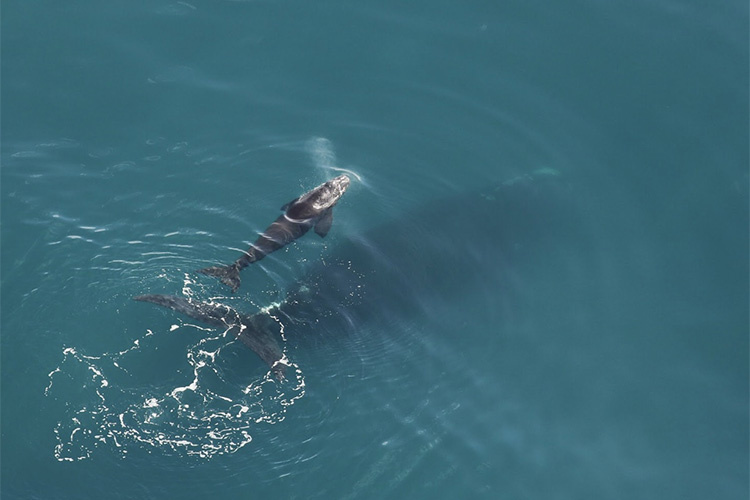Season For Right Whales Off Georgia Coast Begins, As Outlook For The Species Gets Worse

The North Atlantic right whale – the official marine mammal of the state of Georgia – is now one of the most endangered whales in the world.
Photo courtesy of Georgia DNR/CMARI Aerial Survey / Photo courtesy of Georgia DNR/CMARI Aerial Survey
This is the time of year when North Atlantic right whales return to Georgia’s coastal waters from further north. Female whales come to the Georgia and Florida coasts in the winter to give birth and begin to raise their calves.
Each of those calves is increasingly important, as the number of whales has been dwindling.
Last week, the first newborn calf of the season was found dead, washed up on a North Carolina beach.
The calf is the 32nd North Atlantic right whale found dead since 2017, according to the National Oceanic and Atmospheric Administration. During the same time period, just over 20 calves have been born.
A recent preliminary population estimate from federal researchers suggested there are even fewer right whales left than they had thought: They estimate there are 366 North Atlantic right whales living. Fewer than 100 are breeding females.
The whales have been getting tangled in heavy fishing gear and getting hit by ships. At the same time, their main summer food source appears to be shifting north, possibly connected to a changing climate.
North Atlantic right whales were popular for their blubber. They float when they die, so they were the “right” whales to hunt. They were on the brink of extinction when hunting right whales was banned in the 1930s, according to the Marine Mammal Commission.
Their population had gone up since then but has now gone into decline. The North Atlantic right whale – the official marine mammal of the state of Georgia – is now one of the most endangered whales in the world.








